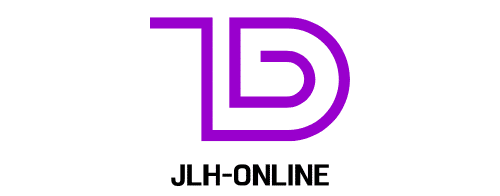How Is Digital Twin Tech Being Applied to Personal Health Management?

Imagine a world where medical professionals could predict health outcomes, tailor treatments, and manage healthcare more effectively based on accurate, real-time data. This is not the stuff of science fiction but a rapidly evolving healthcare revolution driven by digital twin technology. This article aims to delve into the fascinating world of digital twins in healthcare, exploring its development, applications, and impact on patient care management.
What is a Digital Twin in Healthcare?
A digital twin is a virtual replica of a physical system or object, created using real-time data collected from sensors embedded in the said system or object. In the context of healthcare, digital twins are digital replicas of individual patients. They are designed to accurately reflect the current and future states of a patient’s health, based on a combination of medical histories, real-time monitoring, and predictive analytics.
In the same genre : Can Machine Learning Improve the Precision of Drug Dosage in Personalized Medicine?
Digital twin technology in healthcare is still in its infancy, with most applications currently focused on optimizing device performance and improving clinical operations. However, scholars and researchers predict that as the technology matures, there will be a shift towards patient-specific digital twins that can guide personalized care and treatment decisions.
The Development of Digital Twins in Healthcare
The concept of digital twins was first introduced within the manufacturing industry, where it was used to simulate, predict, and optimize system performance. Not long after, the idea was adopted by the healthcare sector, with the aim of improving patient care and health outcomes.
Also to read : How Are Smart Dust Devices Enabling Next-Generation Environmental Sensing?
Development in this field has been fuelled by rapid advancements in data analytics, machine learning, and the Internet of Things (IoT). These technologies work together to collect and analyze vast amounts of health data, from electronic health records (EHR) to real-time data from wearable health devices.
Scholars have been publishing their findings on this pioneering field through platforms like Pubmed and Crossref. These databases serve as a treasure trove of information for medical professionals and researchers looking to explore the potential of digital twins in healthcare.
The Role of Digital Twins in Personal Health Management
The use of digital twins is transforming personal health management in unprecedented ways. At the most basic level, a digital twin can serve as a virtual representation of a patient’s current health status, providing valuable insights into their real-time physiological functioning.
However, the true power of digital twins lies in their ability to predict future health outcomes. By analyzing historical and real-time data, these virtual models can forecast potential health risks, allowing for preventative measures to be taken in time.
For instance, a digital twin of a diabetes patient can continually analyze the patient’s blood glucose levels, diet, exercise habits, and other relevant factors. Based on this data, the twin can then predict the patient’s blood glucose levels in the future, enabling the patient and their healthcare provider to take necessary preventive steps.
Digital Twin Technology and Google’s Healthcare Initiatives
Tech giants like Google are heavily invested in the development of digital twin technology for healthcare. Google’s healthcare initiative, Google Health, is harnessing the power of artificial intelligence (AI) and data analytics to create digital twins that can predict and manage health conditions more effectively.
Google Health’s digital twin initiative is not just confined to individual patients. It also extends to simulating entire healthcare systems, with the potential to revolutionize healthcare management on a broader scale. This could lead to more efficient resource allocation, improved patient care, and ultimately, better health outcomes.
Challenges and Future Directions in Digital Twin Healthcare
Despite the promising benefits, digital twin technology in healthcare is not without its challenges. The successful implementation of this technology requires large quantities of high-quality, real-time data, which can be difficult to collect and manage. Moreover, there are significant concerns around data privacy and security, particularly in relation to sensitive health information.
Furthermore, the use of digital twins in healthcare is currently limited by the complexity of human physiology. Our understanding of the human body is still evolving, and the capacity to accurately model and predict health outcomes is dependent on the depth of this understanding.
Despite these challenges, the future of digital twin technology in healthcare looks bright. As we continue to gather more data and develop more sophisticated models, the potential for personalized, preventative healthcare becomes increasingly attainable. The digital twin revolution is set to redefine the landscape of healthcare, offering exciting possibilities for improved patient care and health management.
How Digital Twin Technology Empowers Patients and Healthcare Providers
The concept of digital twin technology in healthcare is centered around empowering patients and healthcare providers with accurate, real-time data-led insights. As a digital replica of a patient’s health, a digital twin can provide a more comprehensive picture of a patient’s current and predictive health status.
At the heart of a digital twin’s predictive power is the artificial intelligence (AI) that drives it. AI allows the digital twin to continuously learn from the massive amounts of real-time data it collects from a variety of sources. It can also analyze historical medical data, giving it a broader perspective on the patient’s health.
For example, a digital twin can continuously monitor a heart disease patient’s blood pressure, heart rate, medication intake, and diet. It can then utilize AI to analyze these data points and predict potential health risks. These could range from the likelihood of a future heart attack to the effectiveness of a prescribed drug.
Such predictive analysis helps facilitate decision making for healthcare providers. They can tailor treatment plans based on the personalized insights derived from the digital twin, resulting in more efficient and effective patient care. It also allows patients to better manage their health by acting on the preventative measures suggested by the digital twin.
Conclusion: The Future of Digital Twin Technology in Personal Health Management
Digital twin technology is poised to revolutionize personal health management. As this technology continues to mature and overcome the challenges of data privacy, security, and complexity of the human body, it is set to offer more accurate, predictive, and personalized healthcare solutions.
Research is being conducted extensively in this area, with numerous studies being published on platforms such as article pubmed and crossref google. The insights from these studies, coupled with advancements in data analytics and machine learning, will likely accelerate the development of digital twin technology in healthcare.
Tech giants like Google are leading the charge in this technological revolution. Google Health’s investment in creating digital twins is testament to its potential in reshaping healthcare. By using digital twins to simulate entire healthcare systems, these tech titans aim to enhance resource allocation, patient care, and overall health outcomes on a global scale.
As technological advancements continue to propel the development of digital twins, the future of healthcare is set to become more predictive, personalized, and preventative. It promises a new era where healthcare professionals and patients are empowered with real-time, data-driven insights for better health management. The healthcare digital twin revolution is just beginning, and its potential is only limited by the extent of our understanding of the human body and the data we can gather.
